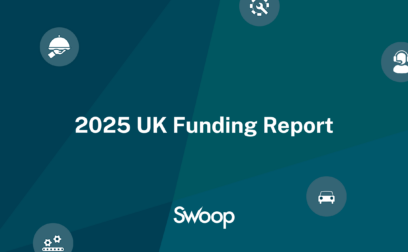TABLE OF CONTENTS
If you’re looking to buy new plant and machinery for your construction, manufacturing or engineering business, you’ll need to weigh up your options carefully. This guide looks at how plant machinery finance works to help you find the best solution for you and your business.
Page written by Rachel Wait. Last reviewed on December 9, 2024. Next review due April 6, 2026.

Plant machinery finance is a type of loan that lets you spread the cost of plant and machinery, enabling you to get the equipment you need without having to pay for it all upfront. It helps to ensure your payments are affordable without having to use valuable cash reserves. Plant machinery finance can also be tax-efficient as your accountant will be able to reduce your tax liability by offsetting any rental or interest payments and by reclaiming any VAT paid.
Plant machinery finance can be suitable for large engineering companies, small parts manufacturers or any other business that needs to get hold of plant and machinery but doesn’t have the cash to pay for it outright. Plant machinery finance can help to keep costs down and improve your cash flow position over time.
You can use plant machinery finance to help you purchase vehicles and equipment such as:
There are a number of options to consider when it comes to your plant machinery finance choices. These are outlined below:
Equipment leasing enables you to rent equipment from a vendor or leasing firm over a fixed term. You make regular payments to use the asset but the leasing firm is responsible for maintaining it. At the end of the term, you can either extend the lease, return the asset to the lender, upgrade the asset, or buy it outright by making what’s known as a balloon payment.
Equipment leasing can offer potential tax advantages. It can also be popular with early-stage companies that don’t have enough working capital to invest in their own assets, or established SMEs that want to upgrade their equipment. However, it can be more expensive than buying the asset outright.
With a finance lease, a leasing company buys the asset on behalf of your business and then rents it back to you. You make monthly repayments over the term, until you cover the cost of the equipment as well as interest. Note that you are responsible for the plant machinery insurance and maintenance costs during this time. After the primary rental period is over, you can choose to extend it, return the equipment or sell the asset to a third party on behalf of the leasing firm.
An operating lease is an agreement to rent specialist plant or equipment for a limited time. It enables you to rent the equipment for the short to medium term and again, you make regular, fixed payments during this time. It can be a good option if you want to upgrade the equipment on a regular basis. It can also be cheaper than a finance lease as the cost is based on the value of the equipment, but over a shorter period.
Hire purchase requires you to pay an initial deposit for the equipment and the remaining cost is then split into monthly instalments, and interest is charged on top. It can be a simpler form of asset finance compared to equipment leasing, but it’s also less flexible because at the end of the term, you’ll own the equipment outright and there are no other options. The equipment will usually be an asset on your balance sheet and any outstanding amount you owe will appear as a liability until you’ve paid back the debt. The company that hires you the equipment is usually responsible for its upkeep.
Hire purchase might suit you if you believe that owning the equipment outright will benefit your business once your contract has finished.
There are two different forms of asset refinance. With the first, you agree to use your assets as security against a loan. These assets can include plant and equipment. Should you be unable to repay your loan, the lender has the right to sell these assets to recoup its money. However, if you repay the loan, plus interest, in full and on time, the assets are returned to you. Because the lender has this security, this type of loan can be cheaper than other forms of borrowing.
With asset-based lending, or sale and hire purchase back, you sell a hard asset to a specialist finance company for an agreed lump sum. This will depend on the type of asset, its condition and age, and the percentage you own. You then lease back that asset from the finance provider and repay the lump sum. At the end of the agreement, ownership of the asset is usually transferred back to you.
Refinancing in this way can enable you to access the value of the asset on your balance sheet and use that value elsewhere within your business. For example, if you want to fund a deposit on some new equipment or ease cash flow.
As we’ve explored, there are a number of different ways to finance plant machinery, so you’ll need to assess what works best for you. Think about whether you want a more flexible financing option that lets you decide whether you want to buy or continue renting the asset at the end of the contract or whether you’d prefer to be able to regularly upgrade the equipment.
You will also need to compare interest rates, as well as consider whether you’ll be responsible for maintenance and insurance costs, or whether that will be the responsibility of the lender.
Remember, too, that if you are thinking of using an asset as security, it’s crucial to keep up with your loan repayments to ensure you don’t lose that asset.
Note that if you are a supplier or vendor looking to offer these products on finance, you can consider vendor finance as an option.
If you need help deciding which type of plant machinery finance is right for you and your business, the team at Swoop would be happy to help. We can talk through the different options and help you find the ideal lender for your business. Get in touch today.
Swoop was amazing! I was looking for refinancing and they were straight onto finding me the best possible option. I would highly recommend them.
Laree Smith
Owner, F45 Cambridge
Rachel has been writing about finance and consumer affairs for over a decade, helping people to get to grips with their finances and cut through the jargon. She's written for a range of websites and national newspapers including MoneySuperMarket, Money to the Masses, Forbes UK, and Mail on Sunday. Rachel has covered almost every financial topic, from car insurance and credit cards, to business bank accounts and mortgages.
Swoop promise
At Swoop we want to make it easy for SMEs to understand the sometimes overwhelming world of business finance and insurance. Our goal is simple – to distill complex topics, unravel jargon, offer transparent and impartial information, and empower businesses to make smart financial decisions with confidence.
Find out more about Swoop’s editorial principles by reading our editorial policy.
Related pages
Join the 95,000+ businesses just like yours getting the Swoop newsletter.
Free. No spam. Opt out whenever you like.



























We work with world class partners to help us support businesses with finance
Kingfisher Way, Silverlink Business Park, Newcastle upon Tyne, NE28 9NX, UK
View in Google Maps35 Bull Street, Lewis Building, Birmingham B4 6AF, UK
View in Google MapsAberystwyth Innovation and Enterprise Campus
Gogerddan Campus
Aberystwyth University
Ceredigion
SY23 3EE
Dogpatch Labs, The CHQ Building, Custom House Quay, Dublin, Ireland
View in Google MapsSuite 801, Level 8, 84 Pitt Street, Sydney, NSW 2000, Australia
View in Google Maps43 W 23rd St, New York, NY 10010, United States
View in Google Maps21 Dreyer Street, Cape Town, South Africa, 7708
View in Google MapsClever finance tips and the latest news
Delivered to your inbox monthly
Join the 95,000+ businesses just like yours getting the Swoop newsletter. Free. No spam. Opt out whenever you like.
Thanks for requesting a call back
a member of the team will be in touch.




